
Edward M Merricks
PhD
PhD
About me
Ed is a research scientist. He's an Instructor in the Department of Neurology at Johns Hopkins Medicine and Neurodevelopmental Medicine at Kennedy Krieger Institute, splitting his time between NYC and Baltimore.
Outside being a nerd who enjoys coding for fun (see the pseudo-terminal version of this site!), he also:
Outside being a nerd who enjoys coding for fun (see the pseudo-terminal version of this site!), he also:
Science!
My research focuses on the activity of populations of single neurons in epilepsy patients,
particularly how the firing patterns of individual cells play a role in seizure onset and propagation,
and how we might restrain seizures from spreading through cortex.
To do this, I maintain continuous micro-electrode recordings in patients undergoing surgery to remove pathological tissue,
and develop analytical methods to track individual neurons and explore their activity over days to weeks in order to interrogate the
neuronal firing underlying a range of pathological activities.
I'm fortunate also to collaborate with various lab groups using these methods, exploring a range of neurological questions: from cell-type specific activity at the boundary of brain tumors, to auditory processing of music, to mechanisms underlying loss of consciousness.
For more details on all of these projects, see below for the peer-reviewed publications, book chapters and pre-prints or a selection of the software tools I've developed, or check out my GitHub, Google Scholar profile, ResearchGate profile, or my full academic CV.
I'm fortunate also to collaborate with various lab groups using these methods, exploring a range of neurological questions: from cell-type specific activity at the boundary of brain tumors, to auditory processing of music, to mechanisms underlying loss of consciousness.
For more details on all of these projects, see below for the peer-reviewed publications, book chapters and pre-prints or a selection of the software tools I've developed, or check out my GitHub, Google Scholar profile, ResearchGate profile, or my full academic CV.
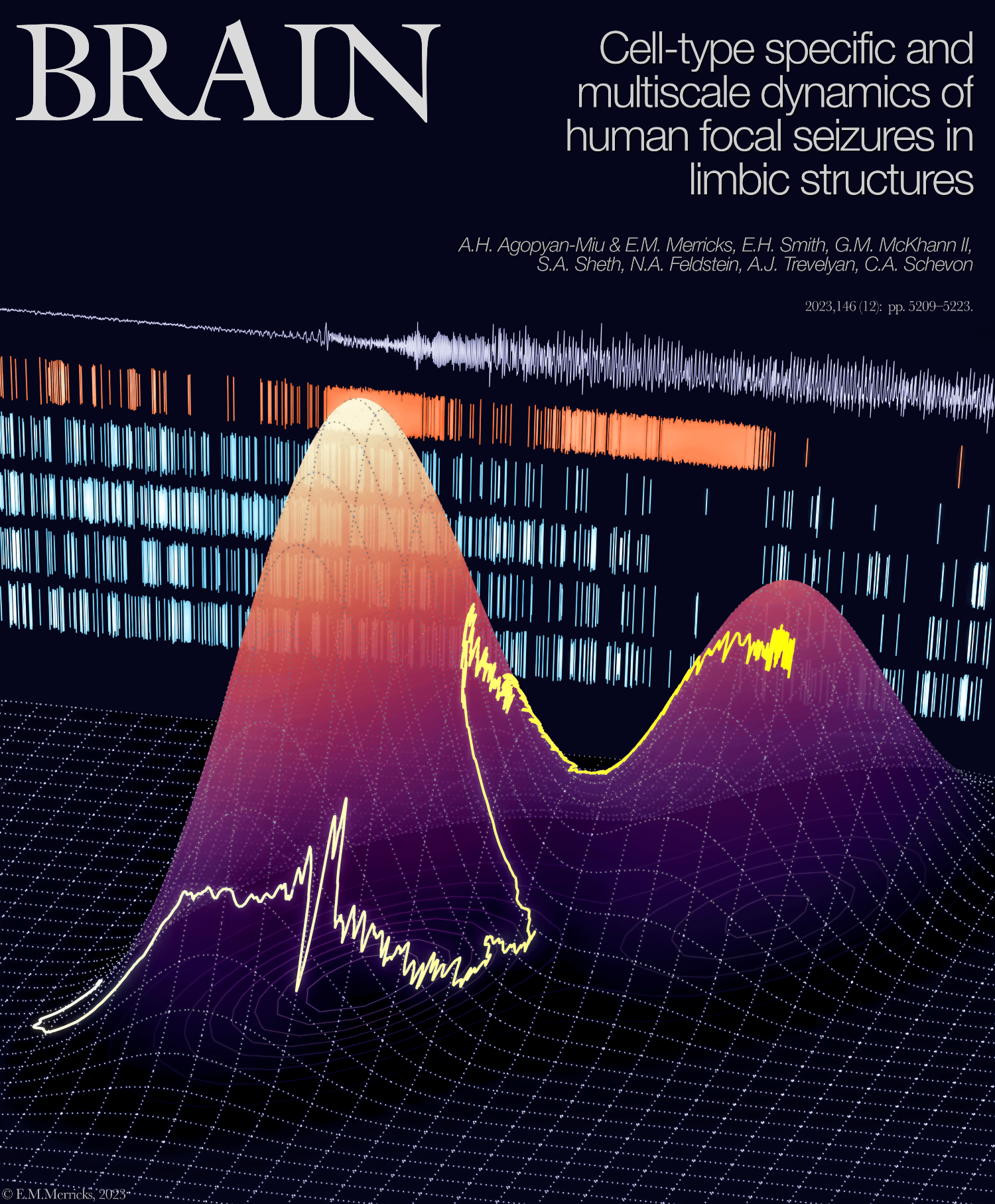
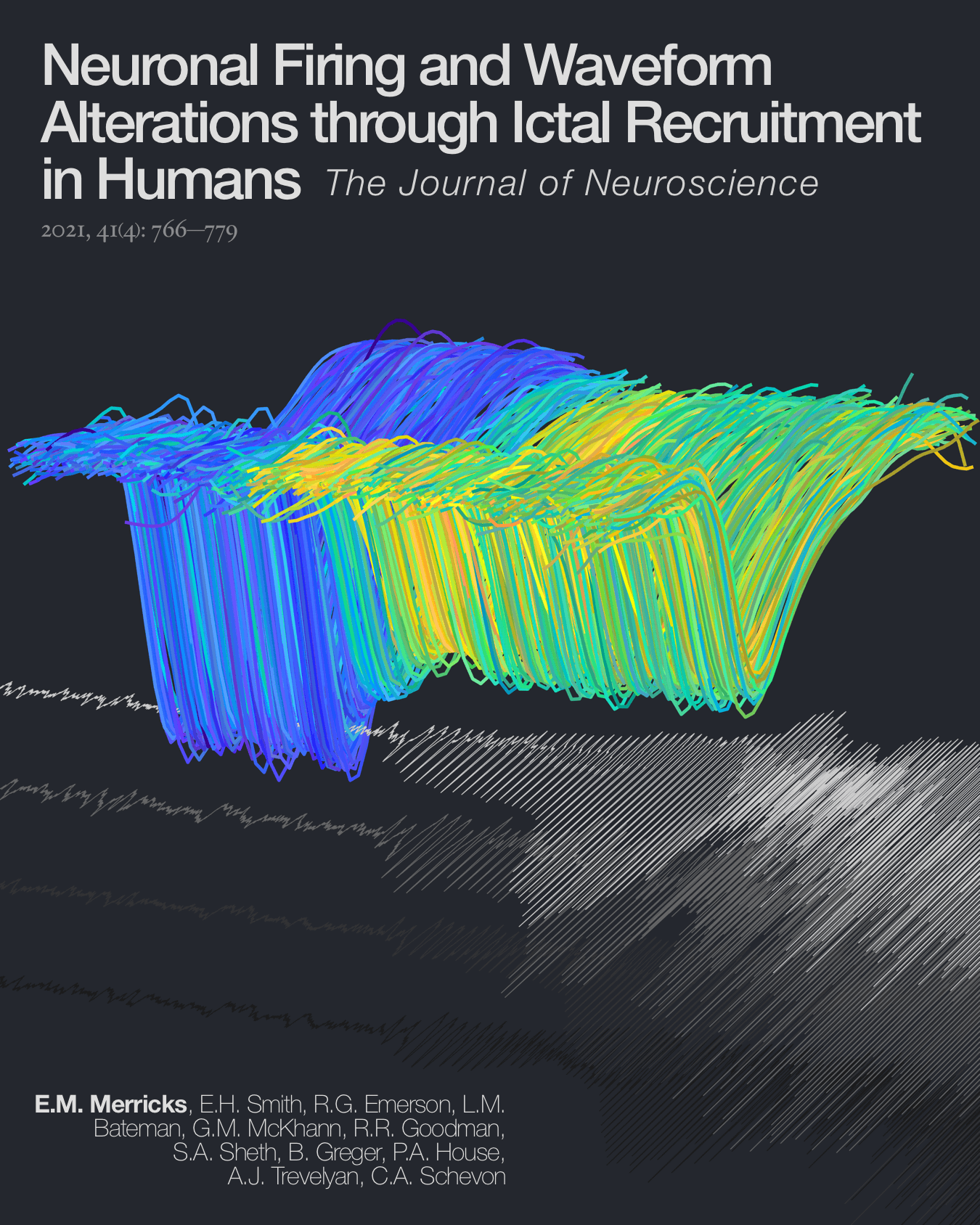
Depending on time available, I also enjoy making "cover art" for some of our publications, made entirely in MATLAB using camera manipulations on real data (though with some panels and text assembled in "post" using Pixelmator). Above are a couple of examples from recent(-ish) first-author papers...
Similar camera manipulations can be used to produce videos entirely from code. For example, if you've ever wanted to "fly" through the action potentials of a neuron that is being recruited to a seizure to get a sense of scale
(and who hasn't? Each action potential here is over in under 2 milliseconds and is less than half a millivolt in amplitude), here you go:
Or perhaps get a feel for when a full population of neurons are firing action potentials during a spontaneous human seizure:
(Here, each dot is a single action potential, with inhibitory activity in red and excitatory in white. For a proper breakdown of this activity see our pre-print below, and example code to create this animation from scratch is also available on my GitHub!)
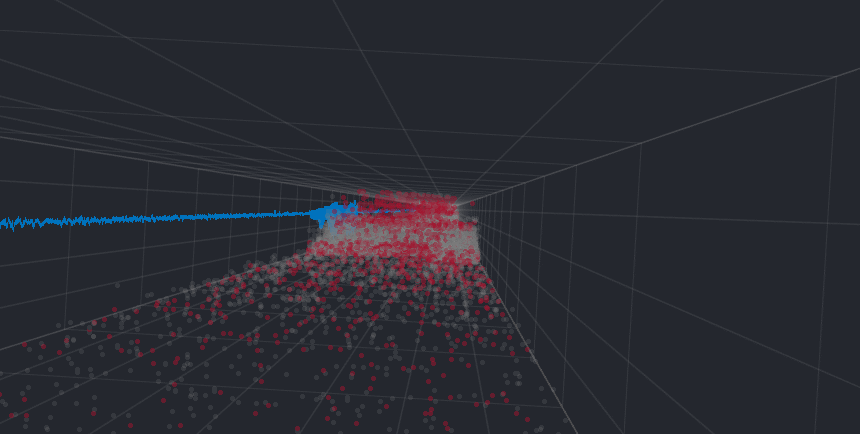
Or maybe finding zen through focusing on how the relationship between frequency bands in the brain evolves over time is more your thing.
Or perhaps get a feel for when a full population of neurons are firing action potentials during a spontaneous human seizure:
(Here, each dot is a single action potential, with inhibitory activity in red and excitatory in white. For a proper breakdown of this activity see our pre-print below, and example code to create this animation from scratch is also available on my GitHub!)

Or maybe finding zen through focusing on how the relationship between frequency bands in the brain evolves over time is more your thing.
Software: (a selection)
NSxFile
An object-oriented approach to loading Blackrock NSX neural data files in Matlab
NeuroClass
Matlab classes to maintain and analyze neuronal spike sorted data
PatientDB
A comprehensive, entirely self-contained database for human neurological recordings
SplitMerge
A fast, modern GUI for the manual stage of spike sorting
Pres
A JavaScript-based class for creating interactive and automated presentations
Convex hull neuron tracking
Relevant code from our 2021 JNeurosci paper
UnitSubclassify
A GUI for semi-automatic single neuron classification by cell type
Publications: 895 total citations, h-index = 13
Book chapters:
Pre-prints:
(Submitted)
(Submitted)
Peer-reviewed publications:
* co-first authors
* co-first authors
* co-first authors
Art
Linocuts (a selection)
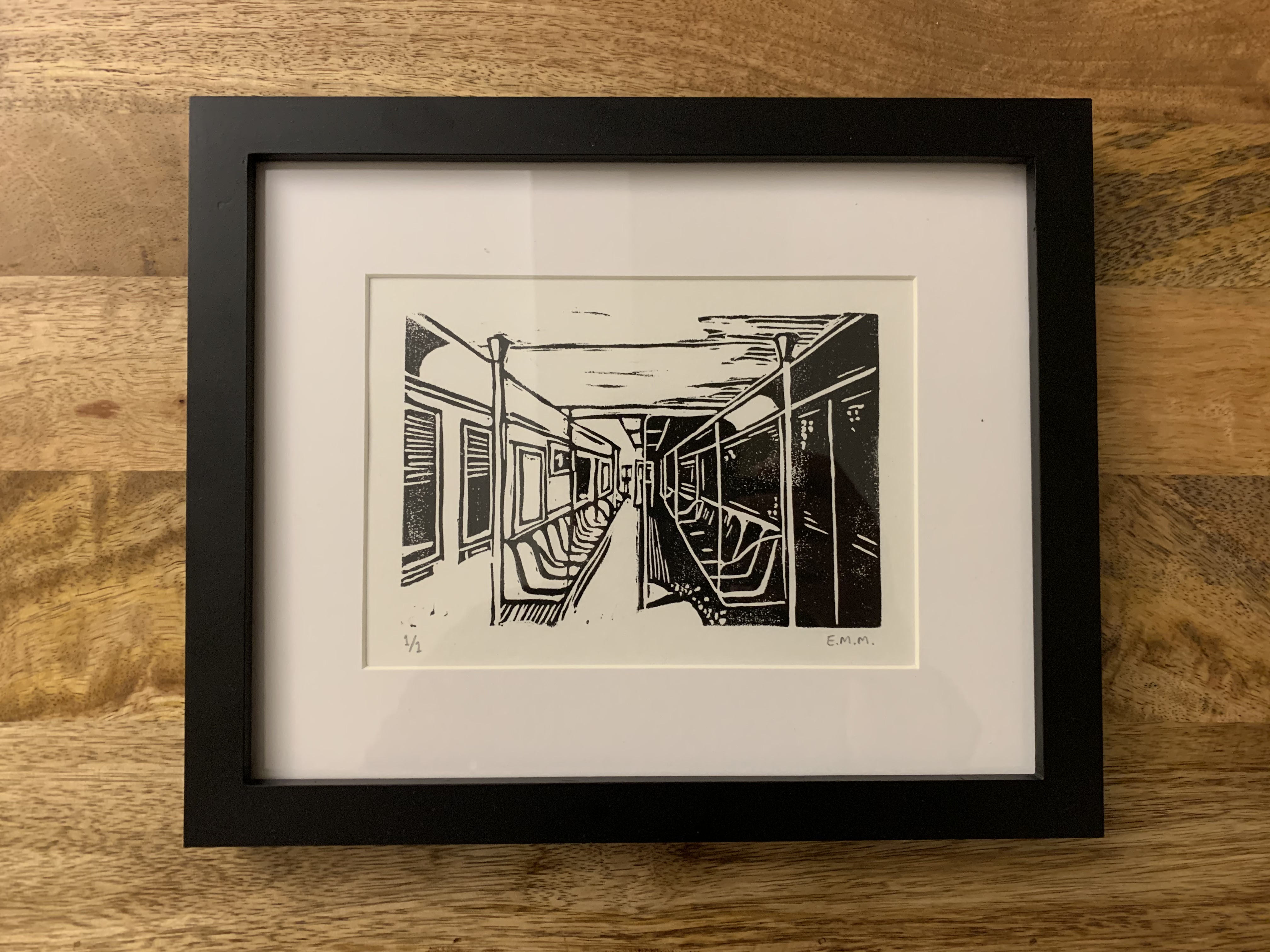
Linocut, 2021
5" x 7"
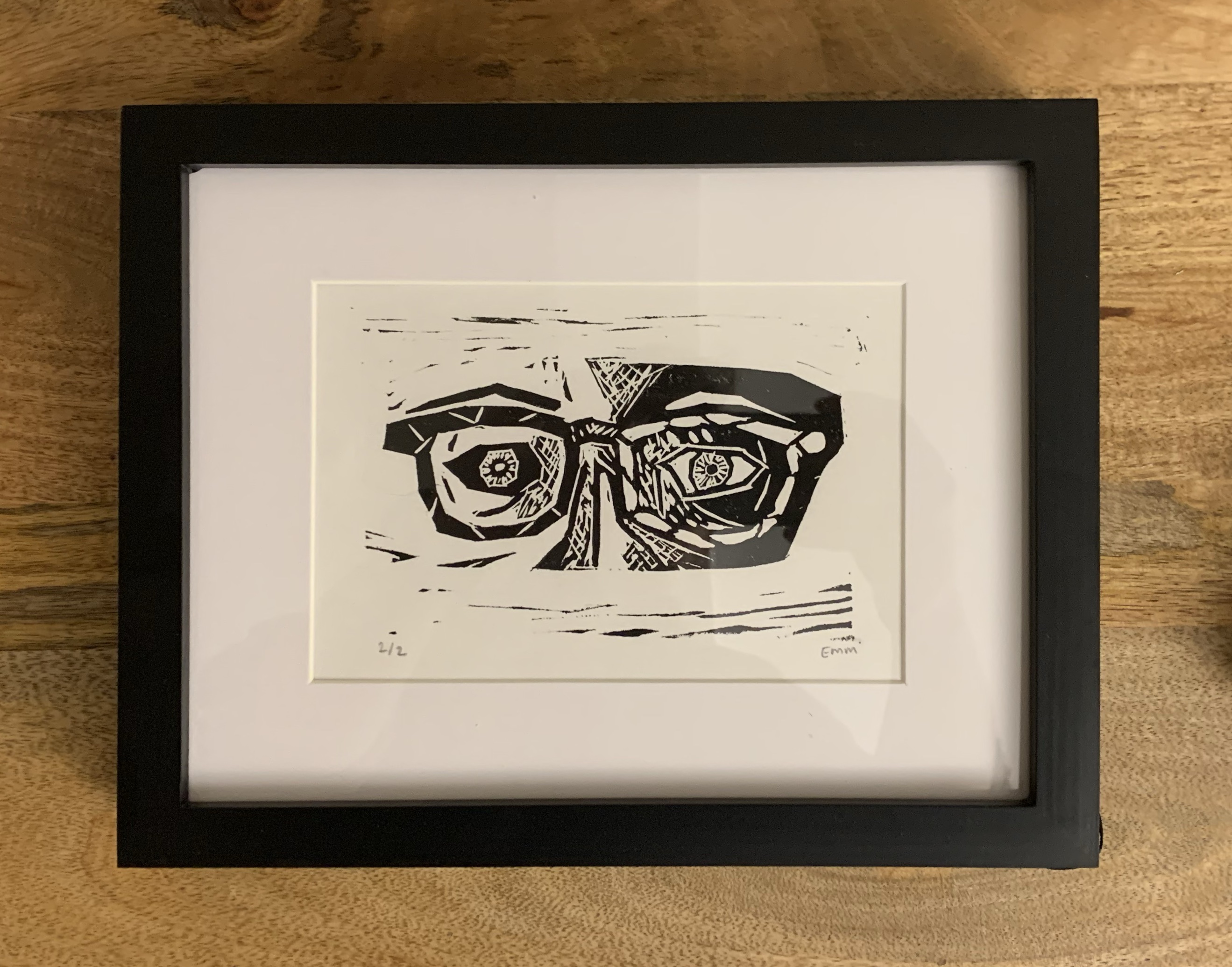
Linocut, 2021
5" x 7"
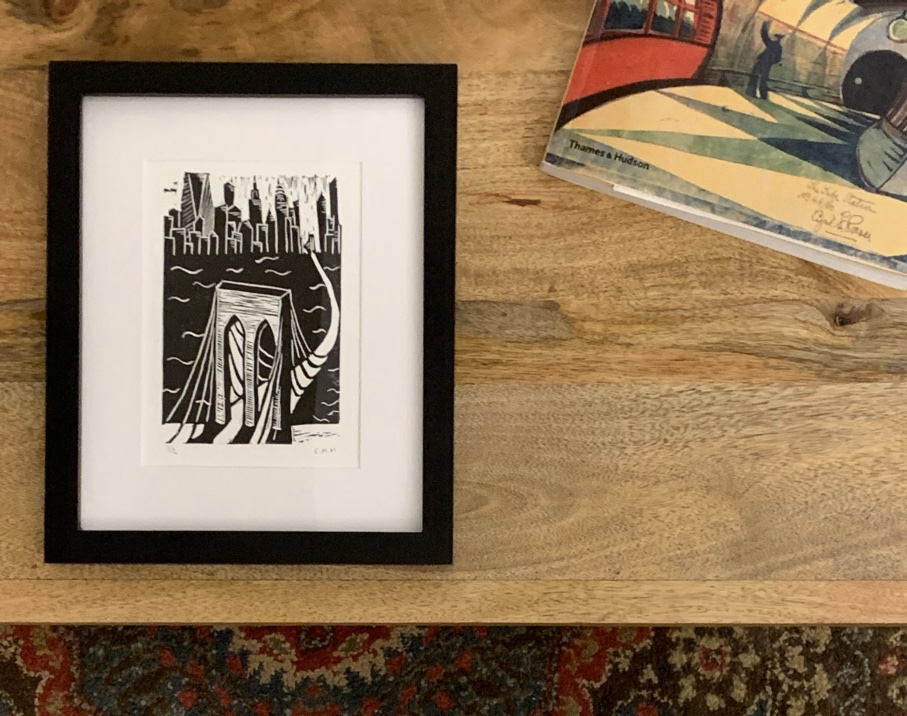
Linocut, 2021
7" x 5"
In production:
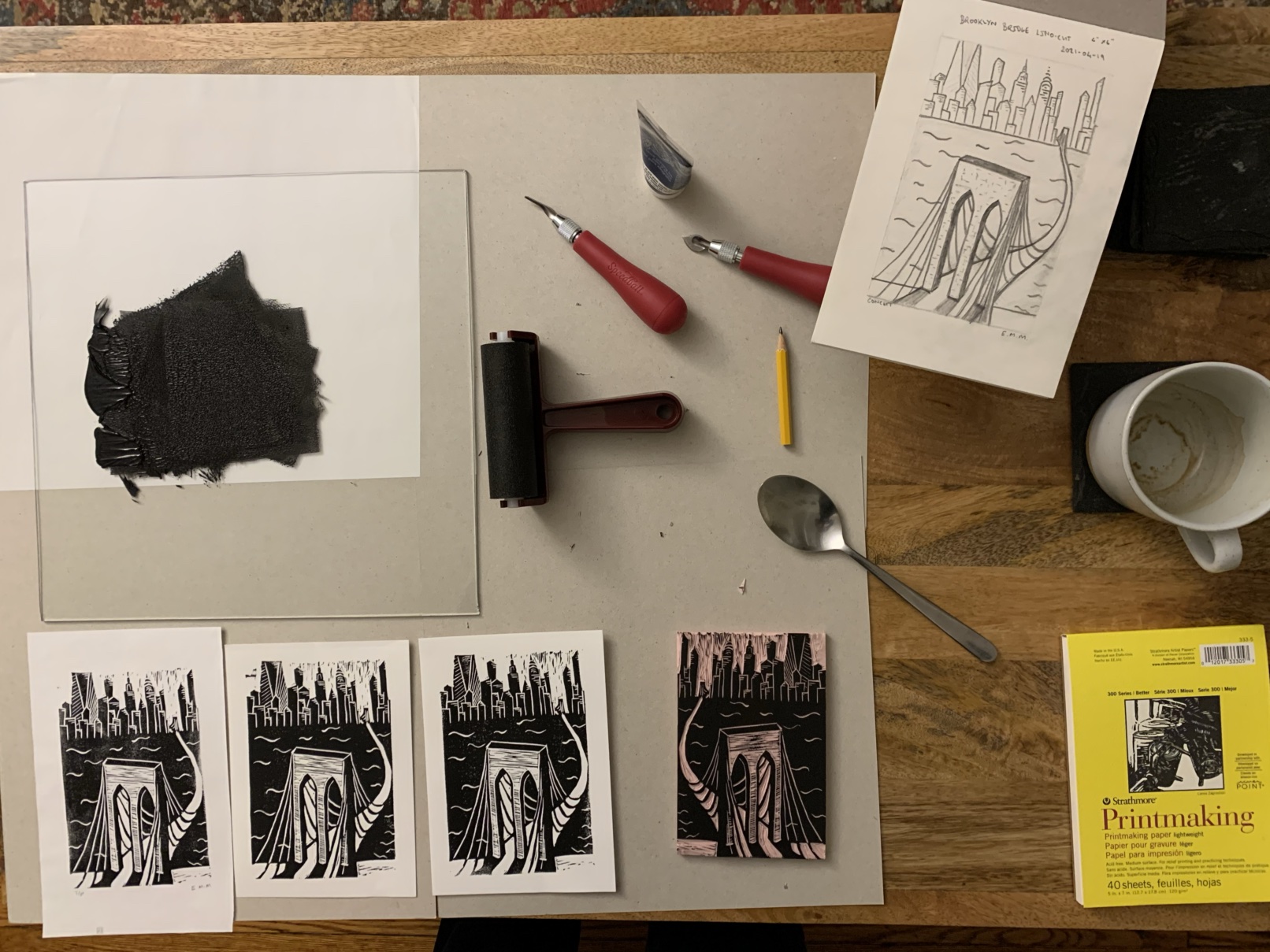
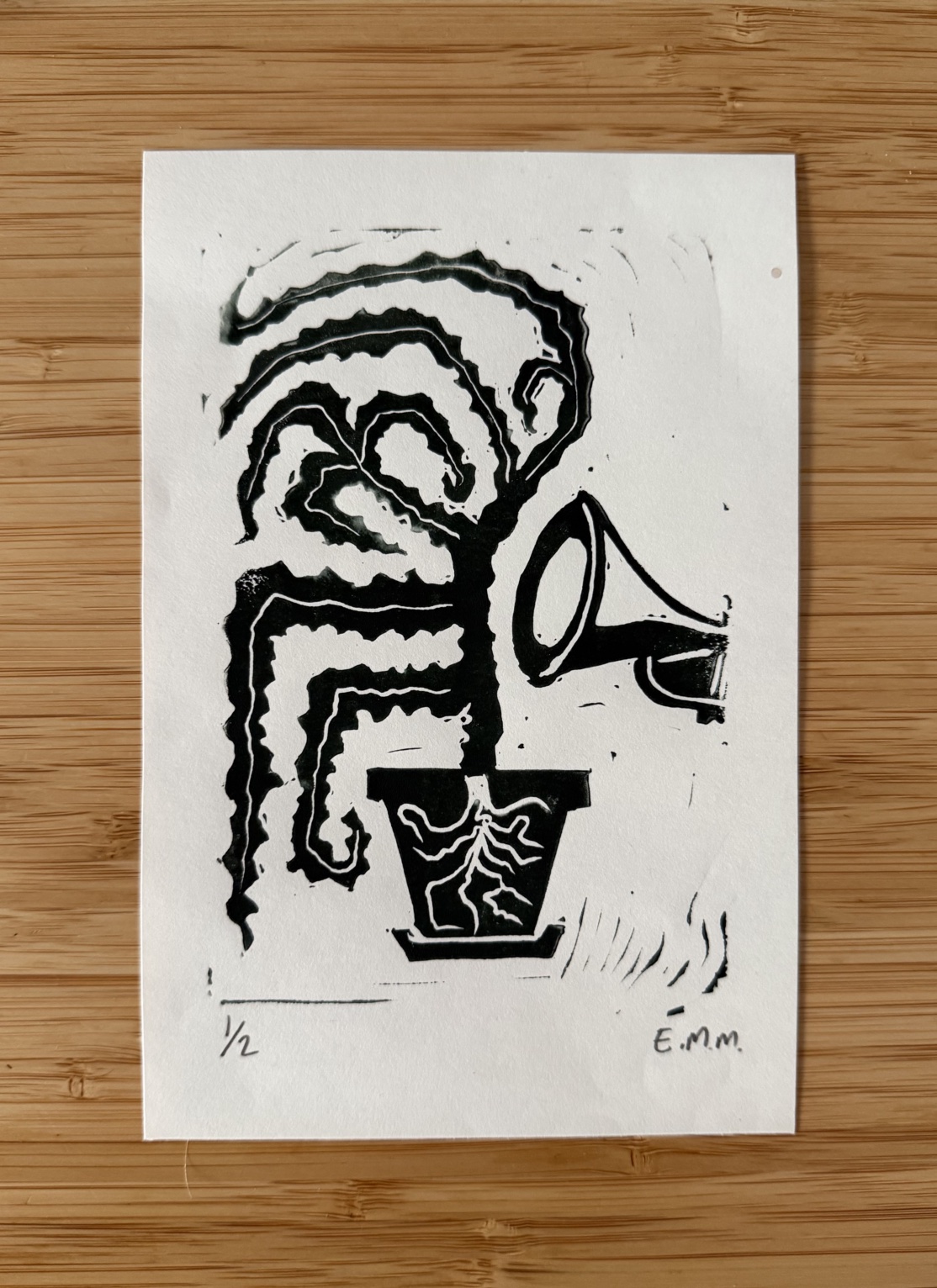
(Speed) linocut, 2025
7" x 5"
Paintings (a selection)

Acrylic on canvas, 2015
40" x 30"
In progress:

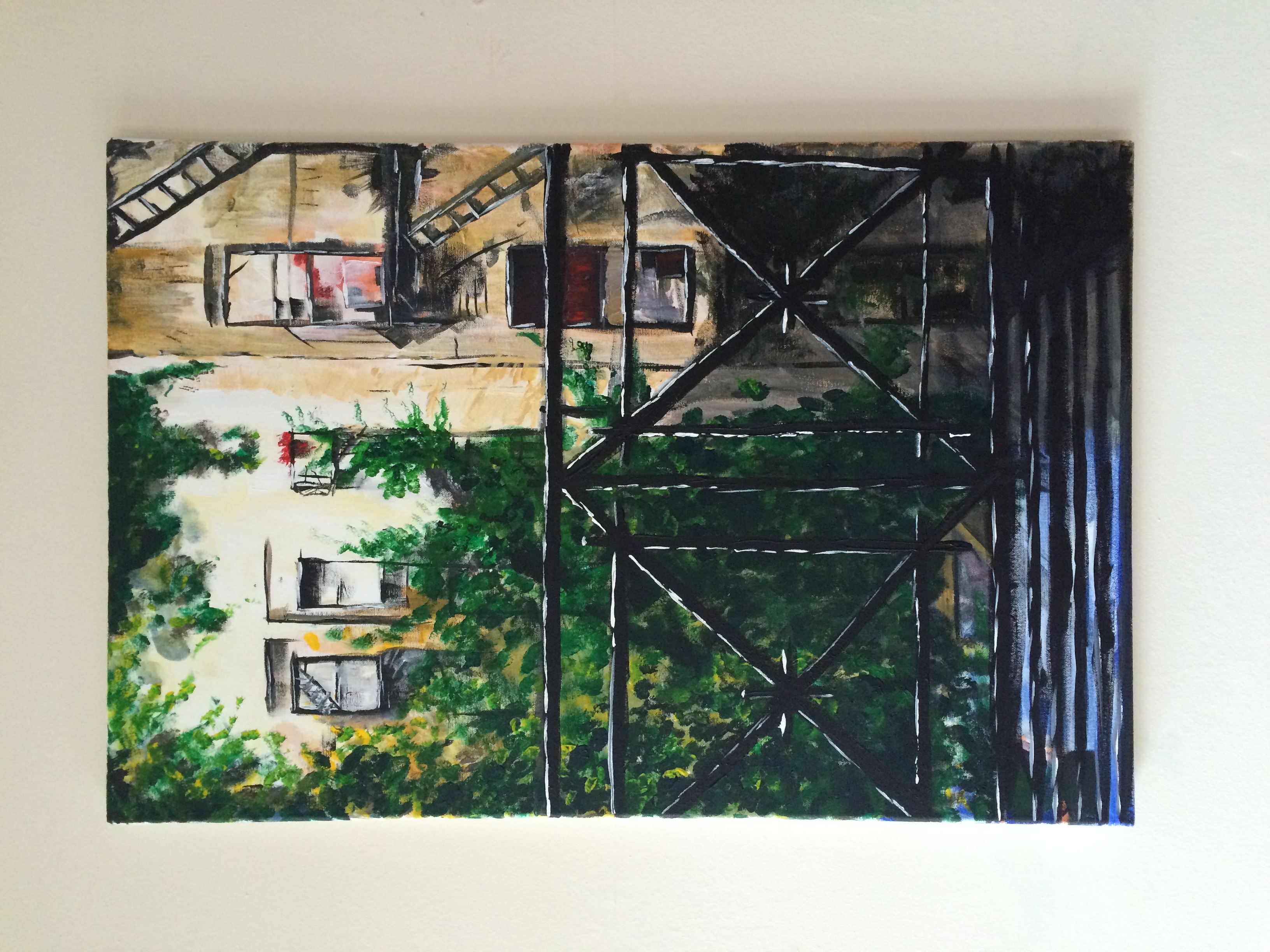
Acrylic on canvas, 2016
30" x 20"
Co-painted with Will!

Acrylic on canvas, 2024
20" x 16"

Acrylic on canvas, 2022
~18" x 14" detail from larger work

Graphite on paper, 2022
11.5" x 8.5"
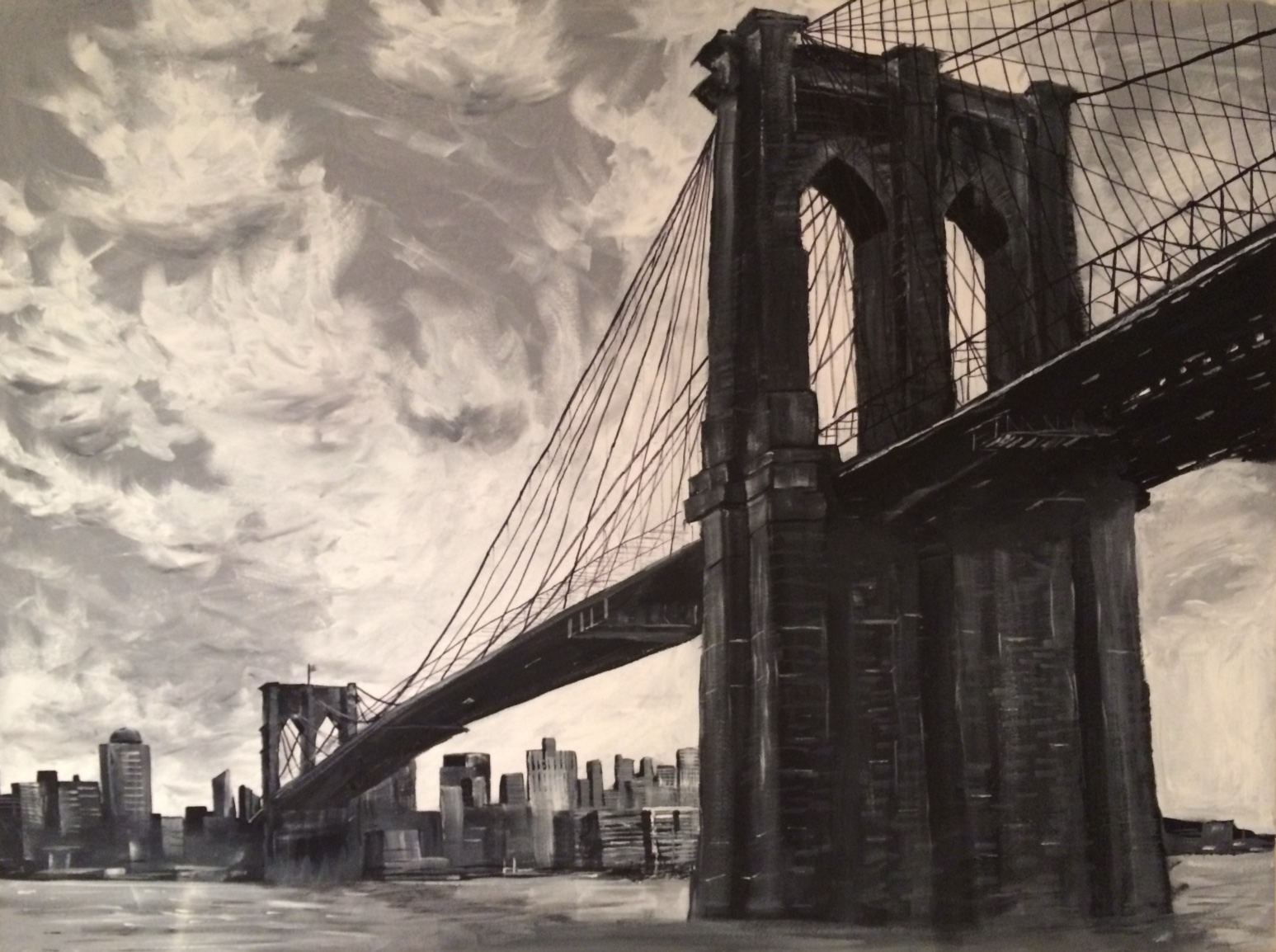
Acrylic on canvas, 2016
36" x 48"
Co-painted with Will!
In progress:


Acrylic on canvas, 2015
~14" x 12" detail from larger work
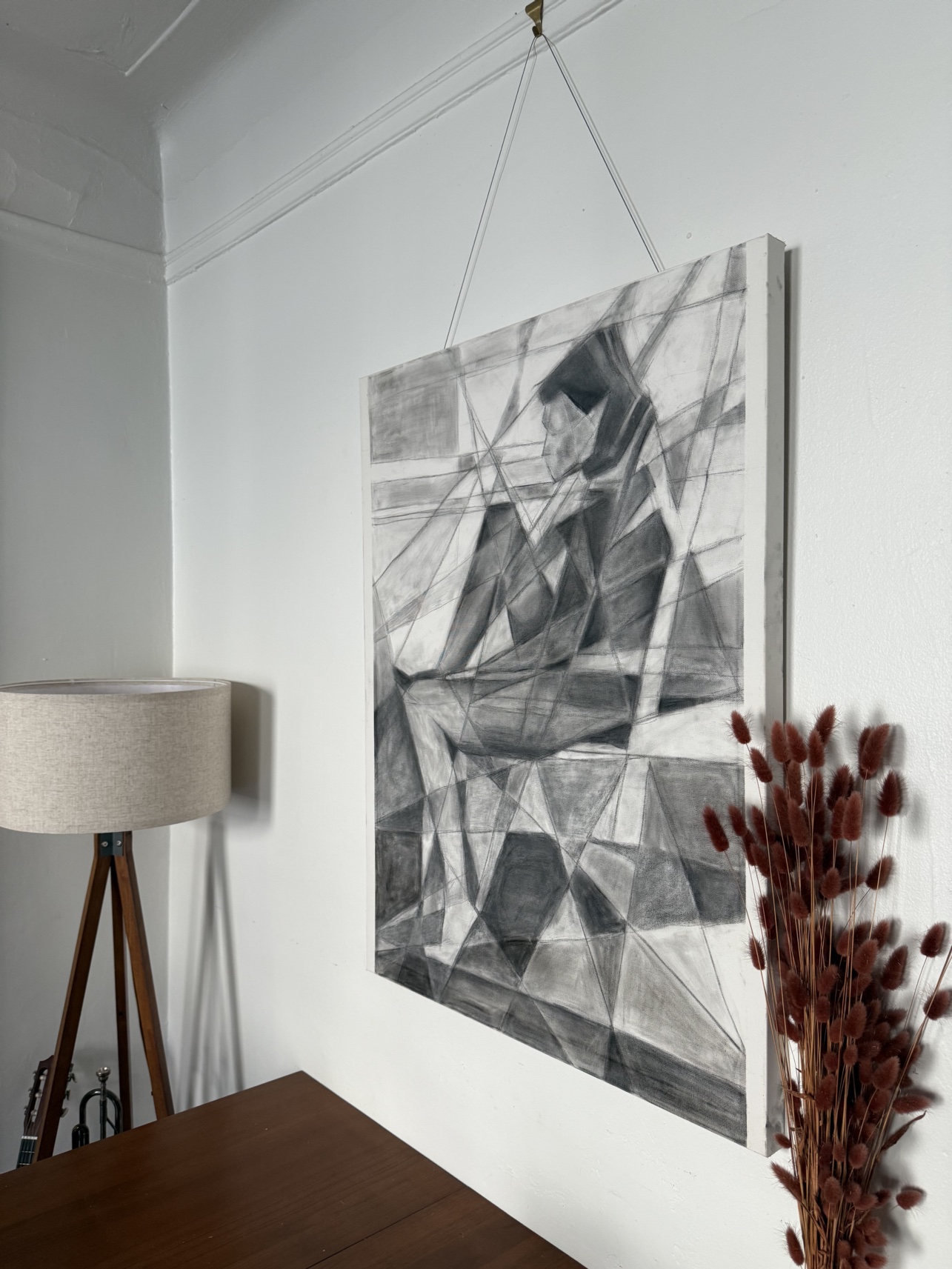
Charcoals and graphite on canvas, 2017
40" x 30"
Expanded from a smaller (11.7" x 8.3") drawing by Corné Akkers
Cheers all.

© E. M. Merricks, Ph.D., 2025
